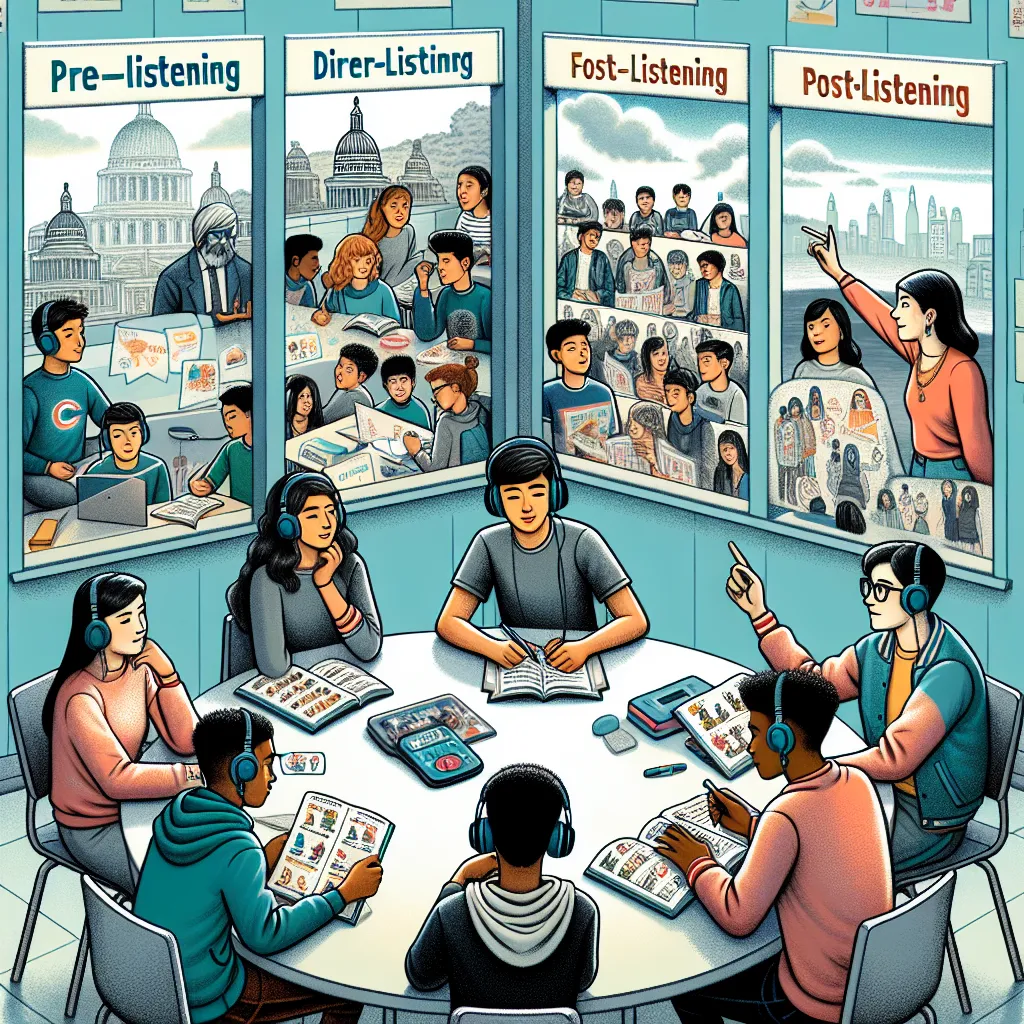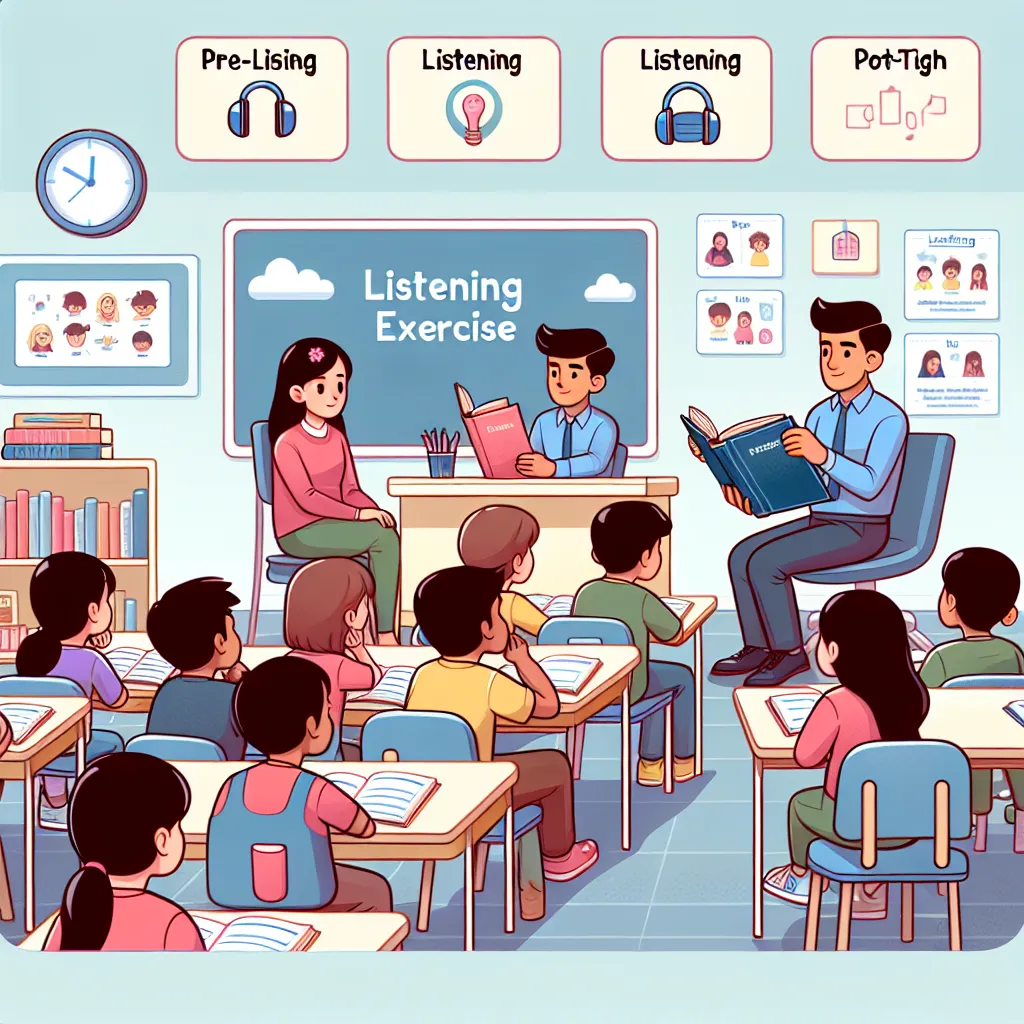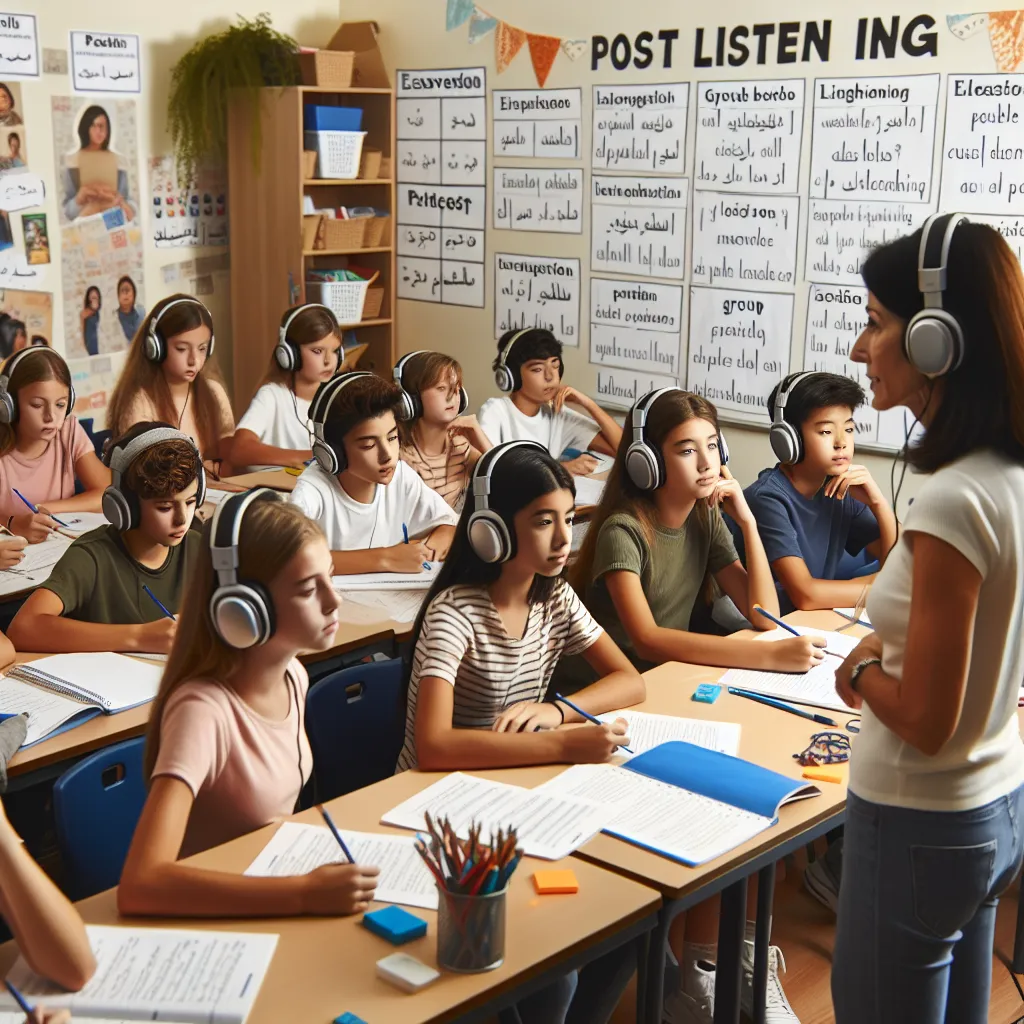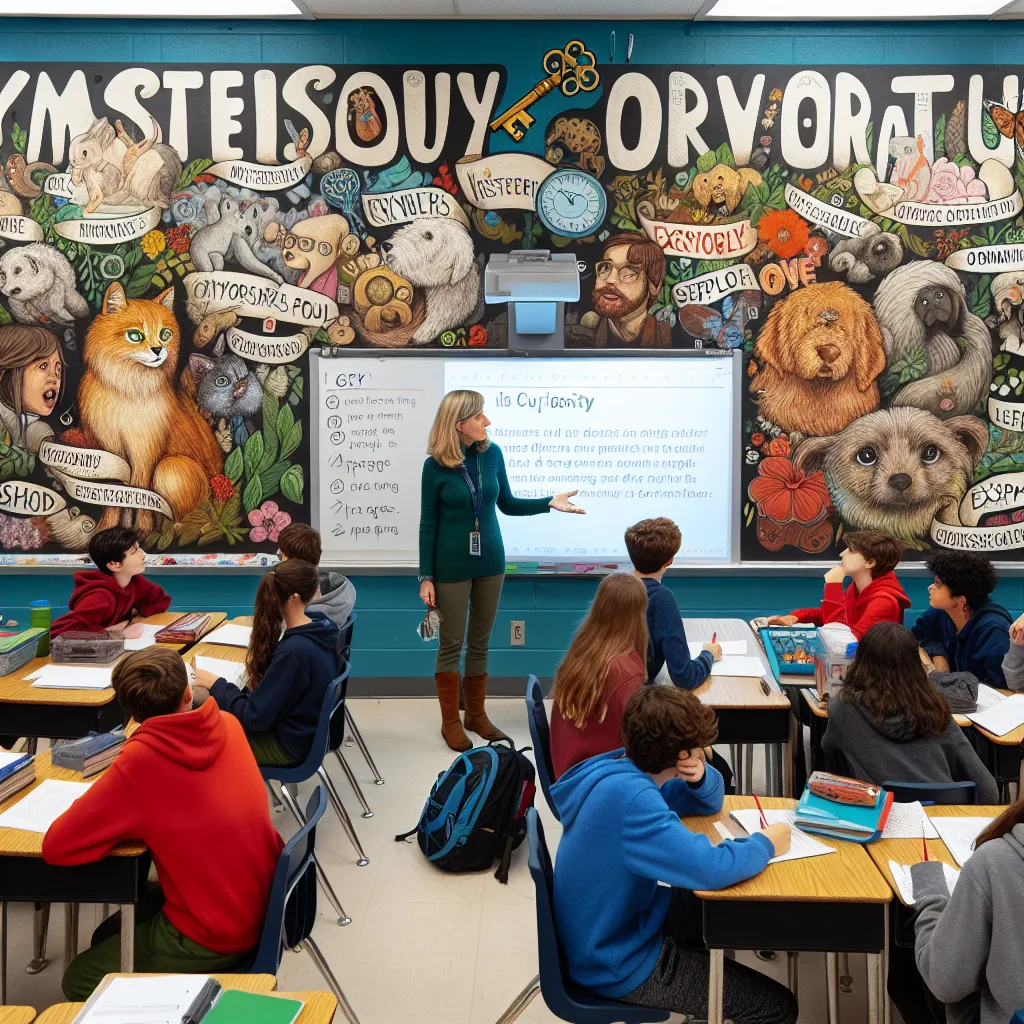Ask AI on The Internet
Question: Listening is a foundational skill in the process of learning any language. In a 3 – 4 page essay, explain how you would teach listening to a grade of your choice in the Senior Phase. In your discussion, include: 1. Justification of the selection of the reading material based on its suitability for enhancing listening skills. 2. The pre-listening activities you would employ to prepare students for the listening task. Explain how these activities will activate prior knowledge and set a purpose for listening. 3. The techniques and strategies you will use to help students focus on specific aspects of the listening material. Consider how you will keep students engaged and what you want them to extract from the listening. 4. Develop post-listening activities and assessments that will allow students to process and reflect on the material.
### Teaching Listening Skills to Senior Phase Students Listening is an essential skill in language learning that lays a strong foundation for speaking, reading, and writing. For senior phase students, mastering this skill is crucial for both academic success and everyday communication. In this essay, I will discuss an effective approach to teaching listening skills to students in grades 10 to 12, focusing on the selection of suitable reading materials, pre-listening activities, techniques to maintain engagement during listening, and post-listening activities including assessments. #### 1. Justification of the Selection of Reading Material The choice of reading material is critical for enhancing listening skills. For senior phase students, it is beneficial to select materials that are both age-appropriate and intellectually stimulating. I recommend using authentic audio sources such as news reports, podcasts, and interviews, as well as tailored educational content like audiobooks and academic lectures. **Suitability for Enhancing Listening Skills:** - **Relevance:** Topics that align with students' interests and current events help maintain engagement. - **Complexity:** Material should challenge students but still be comprehensible, slowly increasing in difficulty to match their growing skills. - **Variety:** Exposure to different accents, speech rates, and vocabulary enriches the learning experience. - **Contextual Value:** Content providing cultural and contextual information can deepen understanding and retention. #### 2. Pre-Listening Activities Pre-listening activities are crucial as they prepare students by activating their prior knowledge and setting a purpose for listening. Here are some effective pre-listening activities: **Activating Prior Knowledge:** - **Discussion:** Engage students in a discussion about the topic to elicit their existing knowledge and opinions. This can take the form of a brainstorming session or thematic conversations. - **Vocabulary Preview:** Introduce key vocabulary and phrases that will appear in the listening material. This can be done through matching exercises, flashcards, or multimedia presentations. **Setting a Purpose for Listening:** - **Predicting Content:** Encourage students to predict the content of the listening material based on its title or a brief introduction. This can be done through group discussions or individual predictions written down. - **Guiding Questions:** Provide specific questions or objectives for students to focus on during the listening task, making them active listeners. #### 3. Techniques and Strategies During Listening Maintaining student engagement during the listening task is essential. The following strategies can help: **Focusing on Specific Aspects:** - **Note-Taking:** Teach students effective note-taking strategies, such as identifying main ideas, key points, and supporting details. - **Chunking:** Break the listening material into smaller, manageable segments, pausing between sections to check comprehension and discuss key points. **Keeping Students Engaged:** - **Interactive Activities:** Use methods such as "listen and draw," where students draw scenes or diagrams based on what they hear. - **Group Work:** Organize listening tasks in pairs or small groups to promote peer discussion and collaborative learning. **Extracting Key Information:** - **Summarization:** After each segment, ask students to summarize what they have heard. This can be done verbally or in written form. - **Critical Thinking Questions:** Pose higher-order thinking questions that require students to analyze, infer, and synthesize information from the listening material. #### 4. Post-Listening Activities and Assessments Post-listening activities help students process and reflect on the material, reinforcing learning and providing opportunities for assessment. **Reflective Processing:** - **Discussion and Debate:** Facilitate discussions or debates on the topic to allow students to express their understanding and viewpoints. - **Written Responses:** Assign tasks such as writing a summary, a personal reflection, or a response to specific questions about the listening material. **Assessments:** - **Quizzes and Tests:** Design quizzes that include multiple-choice, true/false, and short-answer questions to evaluate comprehension. - **Project-Based Assessments:** Assign projects such as creating a presentation or a report based on the listening material, encouraging deeper engagement and application of knowledge. - **Peer Feedback:** Organize peer-review sessions where students assess each other’s summaries or reflections, providing constructive feedback. ### Conclusion Teaching listening skills to senior phase students requires a comprehensive approach that includes the careful selection of suitable reading materials, pre-listening activities to activate prior knowledge and set a purpose, engagement techniques during listening, and reflective post-listening activities and assessments. By implementing these strategies, educators can enhance students' listening abilities, which are foundational for successful language acquisition and effective communication.
Think your answer is better than the AI's? Post it below.
Question Tags
If you want your question answered by an AI, click here.







Post your own comment: